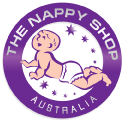Add description, images, menus and links to your mega menu
A column with no settings can be used as a spacer
Link to your collections, sales and even external links
Add up to five columns
Add description, images, menus and links to your mega menu
A column with no settings can be used as a spacer
Link to your collections, sales and even external links
Add up to five columns
A Quick Guide To Baby Teething
February 02, 2022 2 min read

Teething is a painful process for babies, with many becoming unusually fussy and cranky as their new teeth develop. As this can lead to plenty of tears and tantrums, parents also find this period of their child’s development a difficult time. If your baby is due to start teething soon, we’ve given a quick rundown on what it means and how you can help them get through this moment.
When Does Teething Usually Start?
Every child is different when it comes to teething. Although the average age at which teething begins is typically between four and seven months old, some children experience teething both earlier and later. With their first teeth generally appearing at six months old, you’ll need to purchase a baby toothbrush with a suitable infant toothpaste to provide them with the proper care.
What are the Signs of Teething
While there are numerous signs of teething, not every baby shows the most obvious signs. In fact, some babies don’t feel any pain from teething at all. But it’s important to understand the most common symptoms so you can address any issues that arise. For example, excessive drooling is one of the most normal indicators, which can also lead to irritated skin.
You might also find your baby wants to constantly chew on objects or has increased irritability. There’s also a chance your baby’s temperature will be higher during teething. However, they shouldn’t develop a fever, so contact a doctor if this develops.
Best Ways to Soothe Sore Gums
There might not be direct treatment for teething, but there are numerous techniques that parents can use to provide some sense of relief for babies having a tough time. For instance, you can use a clean finger or a wet gauze to apply pressure to the painful area and provide a soothing massage.
Some parents also find success keeping the sore spot cool. This includes letting your baby bite down on a cold washcloth, using a chilled teething ring or cold snacks such as frozen bananas or grapes. Try these methods with your child and see if one provides them satisfying comfort.
Shop the Range Today
Is your baby showing signs of teething? You can stock up on high-quality products at The Nappy Shop. From pram accessories to feeding and baby care, browse our comprehensive range today!
Subscribe
Sign up to get the latest on sales, new releases and more …

Subscribe and Save!
Subscribe to our fortnightly newsletter to receive exclusive offers and discounts.
